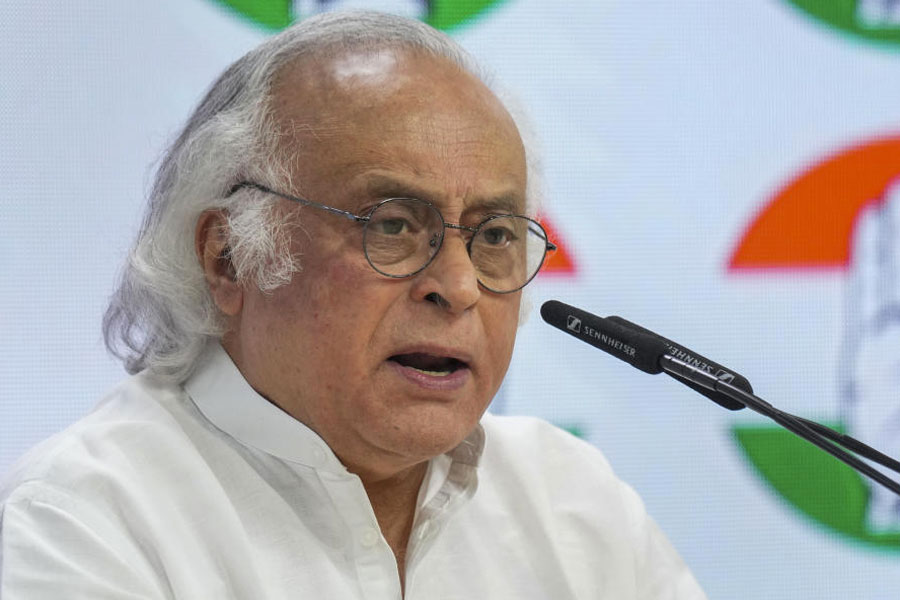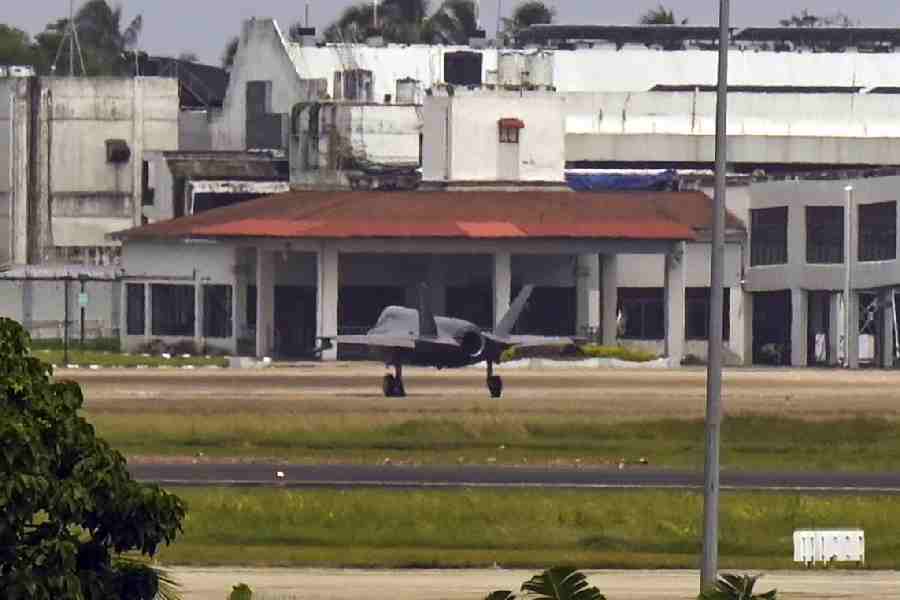 |
| The INS Kursura on display as part of the INS Kursura Submarine Museum at Ramakrishna Beach in Visakhapatnam on Saturday. The Russian- built Foxtrot-class submarine, commissioned on December 18, 1969, served in the Indian Navy until 2001. It now serves as a museum ship on display at the beach. India’s first nuclear-powered submarine, the top-secret Advanced Technology Vessel, will be “put to water” on Sunday at the Visakhapatnam naval dockyard. (AFP picture) |
New Delhi, July 25: When the bugle and the bass sound over Drass and Kargil on Sunday to commemorate 10 years of the Himalayan war, India will get its ultimate military weapon in the south: Prime Minister Manmohan Singh will oversee the opening of a pen in Visakhapatnam’s naval base that houses the country’s first nuclear submarine.
For close to three decades, the Advanced Technology Vessel (ATV), as the nuclear submarine project was called, has easily been the country’s most important and secretive strategic weapons programme.
The media has been told expressly that no photography will be allowed tomorrow. Only five other countries operate nuclear submarines: the US, Russia, China, France and the UK.
“If we had the right type of deterrent, we would not have had the Kargil war. The ATV is the ultimate in deterrence,” says Admiral Sushil Kumar. “I can say that successive navy chiefs have been waiting for it anxiously,” he added.
Now retired, Admiral Kumar was the Chief of Naval Staff from December 1998 to December 2001. As the war in Kargil raged, he ordered his eastern fleet to the western seaboard, threatening Pakistan’s Karachi coast.
Christened the INS Arihant (Sanskrit for “destroyer of enemies”), the submarine will be “put to water” from its dry-dock tomorrow. The navy optimistically expects that the submarine can be inducted into its fleet in two to four years.
But, as Admiral Kumar says: “If you look at strategic projects of the armed forces with any degree of honesty, not a single project has been on time.”
The Indian Navy’s submarine fleet, headquartered in Visakhapatnam, has 16 vessels, all of them conventional (diesel-electric), meaning that they have to keep surfacing — making them more easily detectable — to take in air to charge the engines. A nuclear submarine is capable of staying underwater for months at a stretch.
Although the idea of a nuclear submarine is a cold war product, New Delhi’s military strategists have through the decades have been convinced that it is necessary in India’s regional environment.
A reasonable time-frame for the Arihant to become fully operational is six years. But later this year, for the second time, India will take delivery of an Akula II class nuclear submarine from Russia on lease.
The first time the Indian Navy operated a nuclear submarine was from 1988 to 1991 when it took the INS Chakra on lease from Russia.
The Indian nuclear submarine, “which has substantial technological inputs from the Russians”, as a senior naval officer said, is of a different category than the INS Chakra that was leased or the one (also to be called the INS Chakra) that India expects to get by December. Unlike the INS Chakra, the INS Arihant is designed as an SSBN, Americanese for “ship submersible ballistic nuclear”, meaning that it is not an attack submarine (or SSN) designed to hunt and kill surface and undersea vessels.
An SSBN is designed to be capable of firing missiles with nuclear warheads from under water at targets on land and on the surface. The ATV project, conceptualised in Indira Gandhi’s regime after India’s first nuclear tests in 1974, has always been supervised by the Prime Minister’s Office.
Scientists and technologists of the Defence Research and Development Organisation have been assigned to the navy for its development.
The plan is to make five ATVs. Apart from the Arihant that will be put to water tomorrow, two others are being shaped in collaboration with Larsen and Toubro.
It is only after the induction of the Arihant that the Indian strategic establishment can claim to have developed a nuclear triad — the third-leg of its nuclear deterrence posture since adopting a policy for “no first use” of nuclear weapons. The first and second legs are capabilities to fire nuclear weapons from land from aircraft.
The undersea capability is seen as the ultimate deterrence because a nuclear submarine capable of staying long periods undetected is expected to survive a first strike and hit back with a massive second strike.
“On the surface and above, you are detectable by the electro-magnetic spectrum,” explains Admiral Kumar. “But the underwater is opaque; therefore it will give us confidence.”











